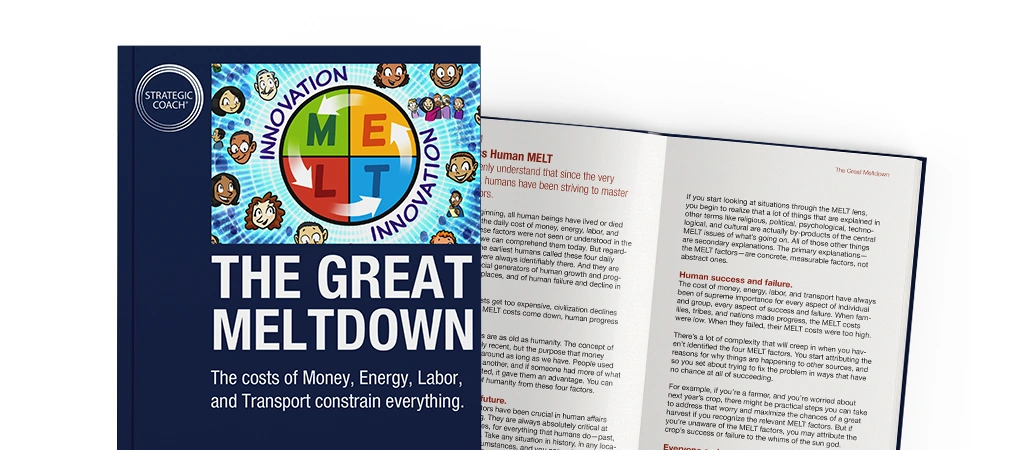How To Build An Employee Incentive Plan That Actually Works
The Strategic Coach Team

Is your employee incentive plan doing what it’s supposed to?
We recently interviewed Alex Freytag, the co-founder of Profit Works, an EOS Implementer, and co-author of the book Profit Works: Unravel the Complexity of Incentive Plans to Increase Employee Productivity, Cultivate an Engaged Workforce, and Maximize Your Company’s Potential on the Team Success podcast. In this post, we’ll share how to build an employee incentive plan that works. To learn more, be sure to grab a copy of his book.
The psychology behind effective employee incentive plans.
There’s a psychology behind structured incentive plans that work. To begin, consider these four questions:
- Transparency: How much information are you comfortable sharing with your workforce?
- Culture: What kind of culture are you trying to build?
- Design: What technology will exist around the incentive design?
- Connection: How will it be rolled out and reinforced, so everyone feels linked to it?
An owner’s mindset isn’t just for owners.
Team members need a mindset shift too, especially if they have an entitlement mentality instead of an earning one. In essence, they need to know how to think about profit—and what levers they control to impact it. That’s why profit education is foundational for successfully structured incentive plans.
Team members must be connected to the company’s vision and see the link between their activities and their payout. Ultimately, this boosts productivity, keeps your team members motivated, and raises your company’s bottom line.
Five incentive plan mistakes.
#1: Siloed Incentive Plans
Structuring incentive plans by “department” or “division” causes separation within the organization and makes incentive administration messy. Incentive plans that work support a cohesive company culture that unites team members around a shared mission.
#2: Subjective and Emotional Plans
If you’ve got a big heart, it can be easy to find yourself giving out arbitrary, unplanned bonuses at the end of the year to show your appreciation. Instead, create a formula with reachable goals that push and inspire your team to earn their piece, not just receive it. This is how to do it right, and it’ll still feel good.
#3: Absent Information
You need to decide how transparent you want to be with your team members regarding the numbers. Data that tracks measurability can help show team members how they’re contributing to profits and losses, and they’ll trust and respect you for being open.
You don’t have to share everything, but some level of transparency is critical in reinforcing their owner’s mindset and keeping them motivated. Check out Alex’s book to get the details on how to structure incentive plans that strategically align with the level of transparency you desire.
#4: Expecting the Incentive Plan to Manage Team Members
Incentive plans don’t take the place of a manager. Although a well-structured incentive plan will encourage engagement, team members must still be led, managed, and held accountable.
#5: Ineffective Timing
Payout timing is essential when it comes to structuring incentive plans. Some teams need more frequent payouts to fuel motivation, while others are happy with a yearly payout.
The self-funded incentive plan.
When team members have an owner’s mindset, they look at the business with different eyes. Suddenly, they’ll notice things they can do better to cut losses and boost profit. With a self-funded incentive plan, team members share in the profits they helped create.
With this kind of incentive plan, you aren’t losing anything. Instead, a trigger (a minimum threshold of profit that considers base costs) activates the incentive.
Another beauty of the self-funded incentive plan is that it is an extrinsic motivator with intrinsic gain, which is the pride of accomplishment and a sense of team spirit. It’s intrinsically valuable to be part of a winning team. And when people are on a winning team, profits are increased, and everybody wins. And winning as a team is fun!
Creating positive tension.
Yerkes-Dodson’s Law of positive tension explains the connection between tension (or stress or anxiety) and performance. Basically, up to a certain point, when tension increases, so does performance. Business leaders can effectively create that tension with healthy expectations, measurable results, and behavioral alignment with company culture.
However, create too much tension, and you’ll have the opposite effect: fear. Alex explains, “There’s a leadership art form to creating enough tension for a high level of performance, but not too much that people are freaking out.”
Alex encourages the use of “tension tools” like scorecards, measurable data, priority lists, and more to promote positive tension.
The three different payout options.
When considering how to build an employee incentive plan that works, there are three different payout options to consider.
1. Percentage of Wages
With this payout option, everyone gets the same percentage of their wage. If you’re hitting your stretch goals, Alex suggests being in the range of 5% to 15%.
2. Equal Payout
Best for smaller, flatter organizations, an equal payout is when everyone gets the same payout, regardless of position or wage.
3. Hybrid
An example of a hybrid model is where the leadership team participates in the all-company plan and has a separate leadership pool. So, for example, the all-company plan might be a percentage of wages, and the leadership pool might be an equal payout.
If you’d like to learn more about how to get your team connected and playing at the top of their game, get your free Team Success Toolkit.







